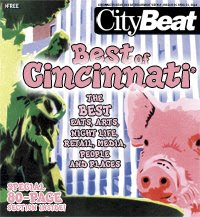21c Museum Hotels and Executive Chef Michael Paley
Open Metropole Restaurant in Cincinnati
Award-winning Hospitality Group and Acclaimed Chef Celebrate the City’s European Roots and Local Agriculture with Fireplace-Focused Restaurant
CINCINNATI, OH (November 13, 2012) – 21c Museum Hotels, the award-winning boutique hotel, contemporary art museum and restaurant group, is pleased to announce the opening of Metropole, located at 21c Museum Hotel Cincinnati, at 609 Walnut Street in Cincinnati, Ohio (513.578.6660; www.metropoleonwalnut.com); the hotel is scheduled to open in the coming weeks. Under the direction of executive chef Michael Paley, previously of Proof on Main in Louisville, KY, Metropole’s menu revolves around a custom-built wood-burning fireplace, emphasizing the city’s European roots and celebrating the region’s local farming and sustainable agriculture.
Paley, also executive chef and a partner in Louisville’s Garage Bar, which features pizza from a wood-fired oven, country ham and fresh oysters, was inspired to create a menu cooked almost entirely by wood-fired heat.
“I became interested in fireplace cooking after working with the wood-fired oven at Garage Bar, and really like the challenge of bringing this ancient cooking method into a modern restaurant kitchen,” says Paley. “Our menu at Metropole reflects Cincinnati’s robust, European-rooted culinary heritage. I am thrilled to have the opportunity to work with the 21c team on another project in a culturally rich city like Cincinnati.”
Building on the foundation he learned at Garage Bar, Paley’s menu focuses on dishes cooked in a custom, eight-foot-wide, wood-burning fireplace that he developed. Paley worked with Craig Kaviar, a Kentucky-based blacksmith and artist, to create cast-iron cranes that are bolted into the fireplace and that swing over the wood-burning fire, allowing Paley to use a variety of unique fireplace cooking techniques. Showcasing Ohio’s producers and farmers, Paley has developed a menu of string-roasted meats, ash-cooked vegetables, and house-made charcuterie. The restaurant’s beverage menu favors American craft beers and bourbon.
Metropole is open daily for dinner with an accessible menu that allows guests to build a meal from various categories. House-made charcuterie, vegetables, salads and small plates are ideal dishes for sharing, including Leek and Celeriac Soup with hearth-baked oysters, bacon, and crème fraîche; Foie Gras topped with toasted pretzel breadcrumbs and served with house-made mustard and sweet and sour onions; Vinegar-Poached Beets, charred in the fireplace and served with bitter greens, fresh goat cheese, farm radishes, and garlic chips; Ash-Baked Pumpkin, served with fresh fall greens, pumpkin seeds, and goat cheese; and an Herb Tea Poached Egg, accompanied by cannellini bean gratin and sautéed winter greens.
The savory portion of the menu is rounded out with a selection of entrees, which features meat and fish dishes that are braised in cast-iron pots hanging over the wood fireplace, roasted on open spits, and sautéed on flat-top grills set over wood embers. The Shelton Farm Pork Confit is complemented by roasted leeks, mustard broth, and chestnut honey; Grilled Swordfish is plated alongside ash-roasted peppers and bulgur wheat; and String-Roasted Chicken is accompanied with dripping-pan vegetables and grilled lemon.
The dessert program concludes the menu and features specialties such as Espresso Pudding Cake with malt, rye, walnuts, and ashed cherry ice cream; Smoked Pear with pomegranate ice cream, brown butter madeleine, black tea and toasted oats; and Caramelized Citrus Caramel with angel food cake, crème sorbet and sea salt.
The beverage program, developed by food and beverage director Melanie Tapp, an alum of Proof on Main and Garage Bar, focuses heavily on a rotating selection of American craft beers on tap. Oskar Blues Beers, which are new to the Cincinnati market, are included on the menu alongside local draft favorite, Blank Slate American Session Ale. Bourbon and rye will be the main focuses at Metropole, paying homage to the original 21c Museum Hotel’s Kentucky roots. A variety of Kentucky’s finest bourbons and ryes will be highlighted on the menu, as well as local Ohio distillers such as Oyo Vodka and Whiskey and Watershed Vodka and Gin. A frequently changing list of specialty cocktails includes Don & Dirty made with Old Grand-Dad, chapa-roasted cranberry, orange, and raw sugar bitters; and The I.T. with OYO Honey Vanilla, jalapeño, lime and soda.
Metropole features a unique bread, coffee, and tea program, tapping into local artisans to offer fresh and ever-changing offerings. In addition to regular coffee service, a rotating menu of locally roasted coffees will be available in French Press to highlight the city’s roasters and micro-roasters, with the first offerings being Tazza Mia and Carabello Coffee. The restaurant’s loose-leaf tea program will feature teas from Kentucky’s leading tea producer, Elmwood Inn, offering guests the chance to taste a variety of the country’s finest teas. Metropole is sourcing all of its bread from Blue Oven Bakery, located in Williamsburg, Ohio. Committed to the use of local farm products and quality ingredients, Blue Oven Bakery makes all bread by hand to deliver an authentic, organic product that will continuously rotate at the restaurant.
Designed by Deborah Berke & Partners Architects, Metropole is housed in the 21c Museum Hotel Cincinnati, formerly the Metropole Hotel, a 100-year-old historic landmark in downtown Cincinnati. Building on its mission of engaging the public with contemporary art and supporting the revitalization of downtown Cincinnati, the new 21c Museum Hotel restores the architectural and historical landmark into a beautiful public space. The open kitchen and wood-burning fireplace create the focal point of Metropole’s warm 90-seat dining room, 14-seat bar, an intimate lounge, and 12-person private dining room, creating an inviting environment for locals, visitors and hotel guests alike. Many of the original elements of the space were preserved including the original mosaic tile floors, arched windows and historic molding and ceiling plaster. Natural tones of cream, brown and eggplant are used throughout the space, and incorporated into decorative accents such as textured, leather banquettes, a copper bar highlighted by a hanging antique mirror, and glazed tiles behind the bar. The space will also feature rotating, curated exhibitions of contemporary art. The restaurant’s opening exhibition, OFF SHOOT: Serial Explorations, presents a wide-ranging investigation of identity, history and the barely perceptible space between fantasy and reality. The exhibition will feature works from artists Sanford Biggers, Loretta Lux, Kay Ruane and Annie Kevans as well as local artist Jay Bolotin and Louisville-based photographer Sarah Lyon.
Through his unique passion for sustainable agriculture and local farming, Paley has created his own, exciting cuisine – one defined by a seamless integration of simple ingredients to create boundary-pushing dishes. With culinary tenures working under noteworthy chefs and operators, such as Daniel Boulud and Drew Nieporent, Paley was able to gain extensive classical training before becoming an executive chef. In 2005, Chef Paley was tapped to open Proof on Main in the 21c Museum Hotel in Louisville, KY, and remained executive chef there until moving to Cincinnati to take the reins at Metropole. At Proof on Main, Paley’s flavor-focused cooking inspired by the culinary traditions of Italy and the American South inspired an accessible and exciting menu that paid homage to the bounty of the Ohio River Valley.
Metropole is open daily for dinner, with lunch and breakfast service to follow. The restaurant is located in the 21c Museum Hotel, at 609 Walnut Street in Cincinnati, Ohio. Reservations are recommended and can be made by calling (513.578.6660). For more information, please visit www.metropoleonwalnut.com or www.facebook.com/metropoleonwalnut.
























